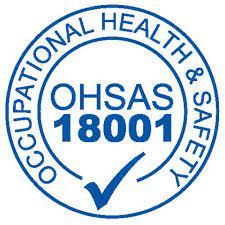“Navigating the Hurdles: Challenges of Air Quality in Commercial Buildings”
In an era where we spend a significant portion of our lives indoors, the quality of the air we breathe within commercial buildings is of paramount importance. Poor indoor air quality can have adverse effects on the health, comfort, and productivity of building occupants. In this blog, we will delve into the challenges associated with air quality in commercial buildings, shedding light on the complexities faced by building owners, managers, and occupants alike.
- Ventilation Woes
One of the primary challenges faced by commercial buildings is ensuring adequate ventilation. Proper ventilation is essential to dilute indoor pollutants and bring in fresh outdoor air. However, striking the right balance between energy efficiency and ventilation can be a challenge. Some buildings may rely on recirculated air to save on heating or cooling costs, potentially leading to a build-up of indoor pollutants. - Indoor Pollutants
Commercial buildings can harbour a variety of indoor pollutants. These pollutants can originate from various sources, including building materials, cleaning products, office equipment, and even occupants themselves. Volatile organic compounds (VOCs), formaldehyde, and particulate matter are among the culprits. Managing and mitigating these pollutants is a constant battle. - Maintenance and Filtration
Maintaining HVAC systems and air filters is crucial for ensuring good air quality. However, in many commercial buildings, maintenance can be sporadic or inadequate. Dirty filters, malfunctioning ventilation systems, and neglected ductwork can contribute to poor air quality. Additionally, selecting the right air filters and ensuring their regular replacement can be challenging. - Temperature and Humidity Control
Maintaining comfortable temperature and humidity levels is essential for occupant comfort and health. Inconsistent temperature or humidity control can lead to mold growth and the proliferation of allergens. Achieving the right balance without wasting energy can be a significant challenge, especially in larger buildings. - Occupant Activities
The actions of building occupants can also affect indoor air quality. Smoking, cooking, or even the use of certain personal care products can release pollutants into the air. Educating and encouraging occupants to adopt air-friendly behaviors can be challenging. - Cost Constraints
Many building owners face budget constraints when it comes to addressing air quality issues. Investing in high-quality ventilation systems, air filtration, and regular maintenance may require a significant financial commitment. Balancing these costs with other building needs can be a delicate task. - Regulatory Compliance
Commercial buildings must adhere to a range of regulations and standards governing indoor air quality. Keeping up with these requirements and ensuring compliance can be an ongoing challenge, especially as standards evolve to reflect new research and concerns.
Conclusion
Addressing the challenges of air quality in commercial buildings requires a multifaceted approach. It demands a commitment to regular maintenance, effective ventilation systems, and the use of high-quality air filters. Building owners and managers must also prioritize occupant education and awareness to foster a culture of good indoor air practices. Additionally, as regulations continue to evolve, staying informed and compliant is essential.
The importance of tackling these challenges cannot be overstated. Healthy indoor air quality is not just about comfort; it directly impacts the well-being and productivity of building occupants. By recognizing and proactively addressing these hurdles, commercial buildings can provide a healthier and more comfortable environment for everyone inside. After all, in the modern world, where we spend so much time indoors, the air we breathe within commercial buildings truly matters.









